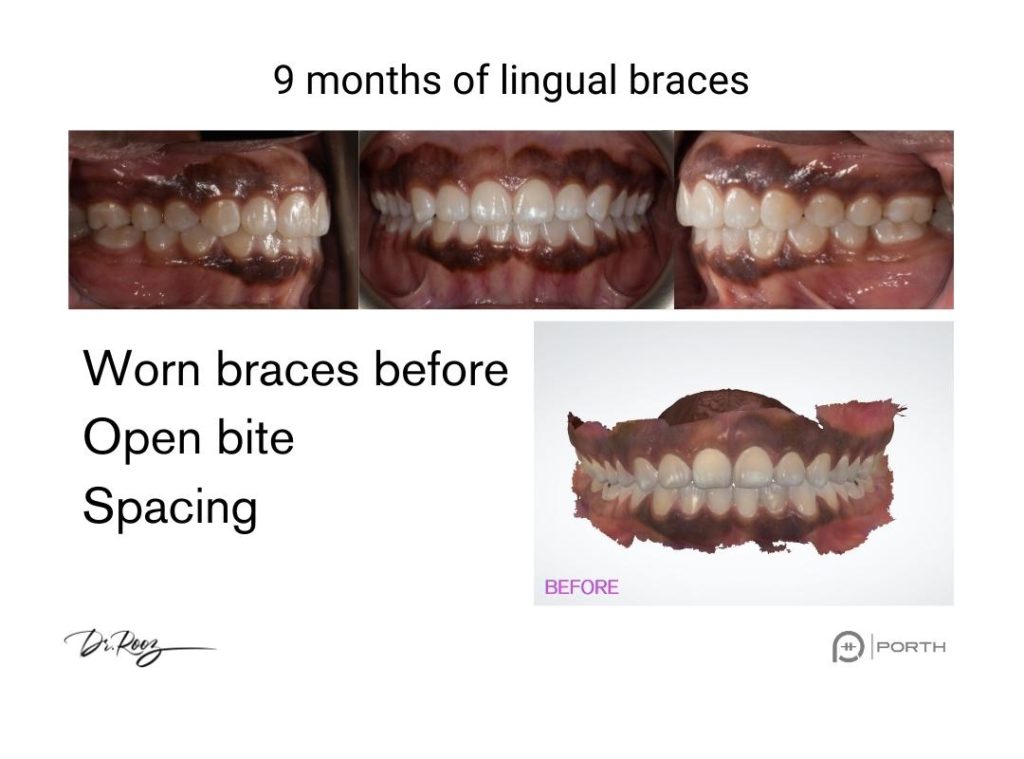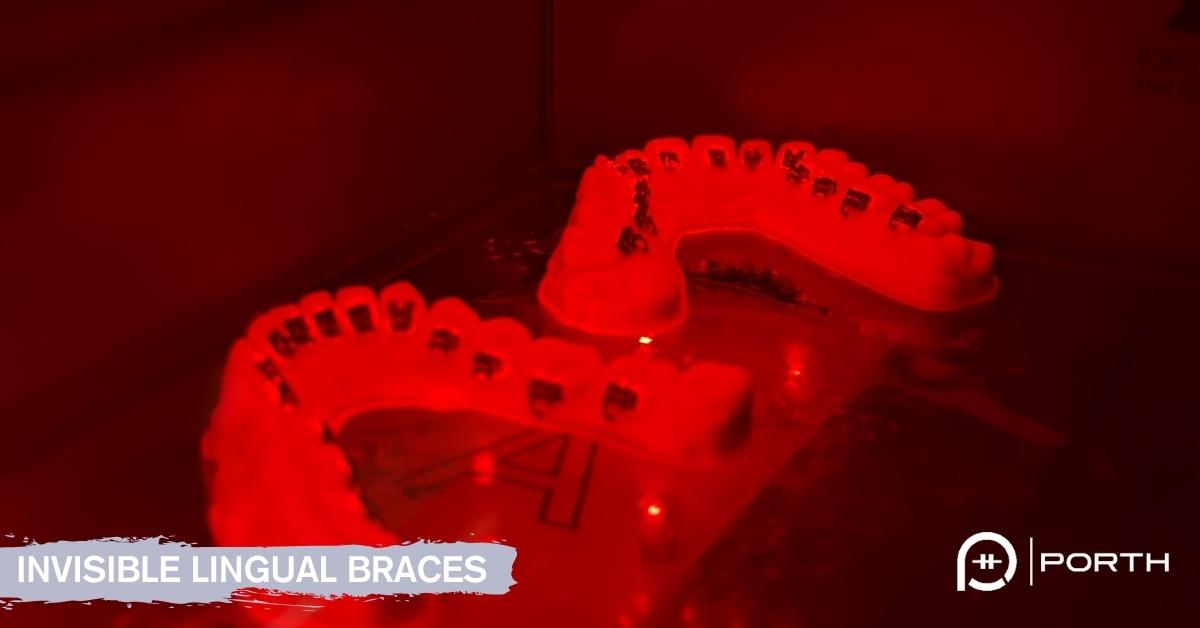Lingual Braces
Lingual braces are similar to traditional metal braces but they are placed back of your teeth. Lingual orthodontics has been around for a long time. Limited number of orthodontists offer this type of braces.
BRIUS
Lingual orthodontic treatment option comes with various systems. Brius is one of the lingual orthodontic systems. The main premise of Brius system is fewer visits to your ortho office. Check up appointments are very short if there is no breakage of braces. Your orthodontist can use elastics with your Brius like other lingual braces or regular braces.

Incognito
Incognito is another lingual orthodontic system like Brius. This system lost its popularity with advances in lingual orthodontics. Dentistry is adapting digital technology which comes with lots of changes and introduction of orthodontic treatment options.
Inbrace
Inbrace like incognito system is one of invisible braces. Inbrace lingual system has a custom wire similar to Suresmile lingual system. Like Brisu system, Inbrace also uses digital orthodontics to build a prefect smile with digital orthodontic treatment planning.
Invisalign vs Lingual Braces
Lingual braces and clear aligners both are cosmetic treatment options. Both these two orthodontic appliances can deliver invisible orthodontic treatment. Aligners aka Invisalign are removable plastic trays that move your teeth incrementally. They require more work for the patient through wearing the aligners 22 hours a day. The biggest advantage of clear aligners compare to traditional braces or lingual braces is the ability to remove them floss, brush, or even take a break.
Lingual braces compared to aligners are efficient in some tooth movements. For example, fixing your deep overbite with lingual braces needs shorter treatment time. You need to know that lingual braces need at least 2-4 weeks of adjustment when they are glued on the back of the teeth. Getting a beautiful smile comes at a cost.
Both Invisalign (clear aligners) and lingual braces can cause lisp and it varies between patients.
Home care for lingual braces
Lingual invisible braces require special home care. You can watch our video that reviews some of the tips on how to take care of your lingual braces.
FAQs on invisible lingual braces
Yes. Brius are invisible braces that are placed on the back of your teeth. The Brius archwire is slightly different compare to other lingual braces.
No necessarily. There are many orthodontic systems. Brius, regular braces, and Invisalign all have pros and cons. Lingual braces are great orthodontic treatment for patients who don’t want to go through the hassle of keeping track of aligners.
Yes. Lingual braces costs more than Invisalign and regular braces.
Brius or other lingual braces systems are installed on the back of the teeth using special custom trays.
Yes. Actually lingual braces including Brius are fantastic orthodontic appliances to correct deep overbite.
The first office visit to get lingual braces or Brius is about 90 mins.
Lingual braces are invisible brace. They are working all the time 24hrs a day and you don’t need to keep track of losing them. Lingual braces are a truly invisible braces to build a perfect smile.
There is a good 2-4 weeks of getting used to Brius lingual braces. Oral hygiene needs more attention and efforts than usual floss and brush. The other con of Brius braces is when you move or are traveling. There are very limited group of orthodontist that knows how to fix any issues.
